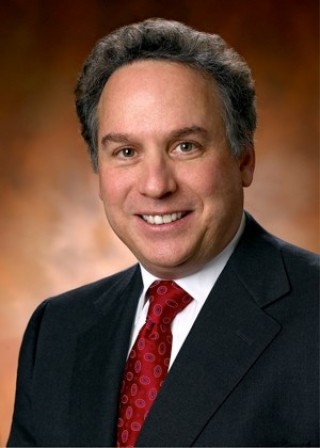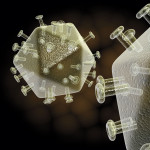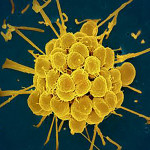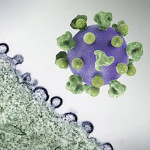Mark Feinberg, MD, PhD, is the new president and CEO of the International AIDS Vaccine Initiative (IAVI). He took over as head of the organization in September 2015. He leads a global team of scientists, clinicians and advocates in the search for preventive HIV vaccines that are safe, effective and accessible.
Prior to joining IAVI, Feinberg was the chief public health and science officer for Merck Vaccines. He served 11 years in total at Merck & Co. in various leadership roles, working on the pharmaceutical company’s vaccine and infectious disease efforts, which included rotavirus, human papillomavirus, shingles and HIV. Most recently, he led the company’s efforts on a promising Ebola vaccine.
Feinberg has more than 30 years of experience in HIV care and research. He was on the faculty at the University of California, San Francisco and the Emory University School of Medicine in Atlanta. He was on the medical staff at San Francisco General Hospital and Grady Memorial Hospital in Atlanta, and he was a medical officer in the Office of AIDS Research at the National Institutes of Health.
What are your thoughts on IAVI marking its 20th anniversary this year?
It’s both a chance to reflect on what the organization has accomplished, as well as to think about its future. This year also marks 20 years since the advent of effective antiretroviral therapy. Before IAVI, that was a time when the most effective approaches to treating HIV had not yet been codified. However, the discussions to create an entity like IAVI predated the biomedical success of effective therapy.
IAVI is committed to the overall goal of ending AIDS. We recognize that AIDS will only come to an end if an effective vaccine is developed, but while that work goes on, every aspect of the response to HIV needs to be maximized. That includes getting as many people as possible who have HIV to know they have the virus and getting as many people with HIV on therapy as soon as they are able. Pre-exposure prophylaxis (PrEP) should also be widely available.
When an HIV vaccine is developed, it will coexist with other treatment and prevention modalities. That creates complexity, but it also creates opportunity and is a testament to how much progress has been made in 20 years. That said, the needs remain enormous. Most people living with HIV don’t know their status, most with the virus are not on treatment around the world, and most who could benefit from PrEP have no way of getting access to it.
A vaccine would be the best possible solution to address a lot of the barriers that currently limit the impact of available interventions in protecting at-risk populations. A characteristic that distinguishes a vaccine from therapy or PrEP is that you can have a defined regimen of administration that would take place over a short period of time and would offer long-term protection.
What is IAVI’s mission?
IAVI is focused on the goal of developing an HIV vaccine. That includes work that we do in our own research labs and programs, but I think even more important than that is our commitment to maximizing the success of the overall HIV vaccine field. That means that we want to put in place resources that can support the work of investigators outside of IAVI, whether they’re from academic labs or government labs.
One example of that is a service that we provide to investigators who don’t have experience taking promising ideas from the laboratory into the clinic. That involves all kinds of complicated issues, like properly manufacturing the vaccine candidate, assuring its quality, dealing with regulatory issues and designing appropriate clinical trials. Many of the most brilliant scientists don’t have that expertise and it wouldn’t be the best use of their time to try to acquire it.
We provide that as a function to investigators. In many ways, what IAVI has designed itself to be in 2016 is an organization that seeks to identify opportunities for greater collaboration in the field. And it seeks to both identify and solve barriers that exist. We are advancing candidate vaccines that have demonstrated promise.

Mark FeinbergCourtesy of IAVI
What are some of IAVI’s successes?
IAVI, our scientists and our collaborators have made major contributions to understanding the immune response in people with HIV and to using that information to guide vaccine development. In the course of that work, we have a much more detailed understanding of the structure of the key components of HIV that will likely be the target of protective immune responses, and we have a much better idea about how to design vaccines.
Part of that work has led to the isolation of a series of monoclonal antibodies, both by IAVI and other investigators, that are now being explored for passive administration to prevent HIV infection. The goal would be to serve the same purpose as oral PrEP, but you might administer it once every three or six months via an injection rather than having to take a pill every day. There are lots of other, even more promising antibodies, including a number that IAVI and partners helped discover, isolate and characterize, that are also being explored as therapeutic or curative agents.
Are there other interventions, including immunologic ones like broadly neutralizing monoclonal antibodies, that could help promote clearance of infected cells that are not somehow reached by drugs themselves? Are there ways of activating the expression of HIV proteins that could then be targeted by immunologic intervention, such as antibodies, to work in concert with the antiretroviral drugs to cure people of HIV? And if it’s not a definitive cure, can you achieve a so-called functional cure? That exploratory research is going on.
Why is this process so difficult?
Developing an HIV vaccine or some modality to cure people of HIV is dependent upon solving many complicated—and currently incompletely understood—aspects of the biology of HIV infection. They’re much more complicated than anything the scientific community has ever been asked to solve for before.
HIV causes an infection that the immune systems of people with the virus aren’t able to get rid of and persists in them throughout their lives. We don’t yet have vaccines that protect against infections the immune system itself is not naturally able to clear.
Making an HIV vaccine means that we’ll have to do better than the immune system normally does itself. There are a number of exciting ideas about how to do that. Will they work? I don’t know. Is it important to find ways of testing them as quickly as possible? Definitely.
The main barrier is the science, but other barriers relate to how effectively people work together to address complicated challenges like this one, which involves a long-term effort. It involves stakeholders from the public sector, the private sector, academia, government and nonprofit organizations. We’re gratified to see increased collaboration in the field. We want to do everything we can to foster that.
What can individuals do to help?
I started working in HIV in 1984. I had no idea at the time that I would be spending my entire career on it. This will outlast me for sure. One of the real challenges is the level of public attention to HIV has waned. Maintaining a durable commitment for as long as it’s going to take to get rid of AIDS is something that I think is an important area for advocacy, not only for IAVI.
Individuals can make sure that the world doesn’t forget about the importance of continuing to pay attention to this issue. Continue to advocate for the development of new innovations. In addition, there is always the opportunity for participation in research studies. There’s a lot of work that will need to be done that will require clinical trials involving both people with the virus and HIV-negative people. Without the commitment of people who have been in clinical trials to date, we wouldn’t have the modalities that we have today.







Comments
Comments